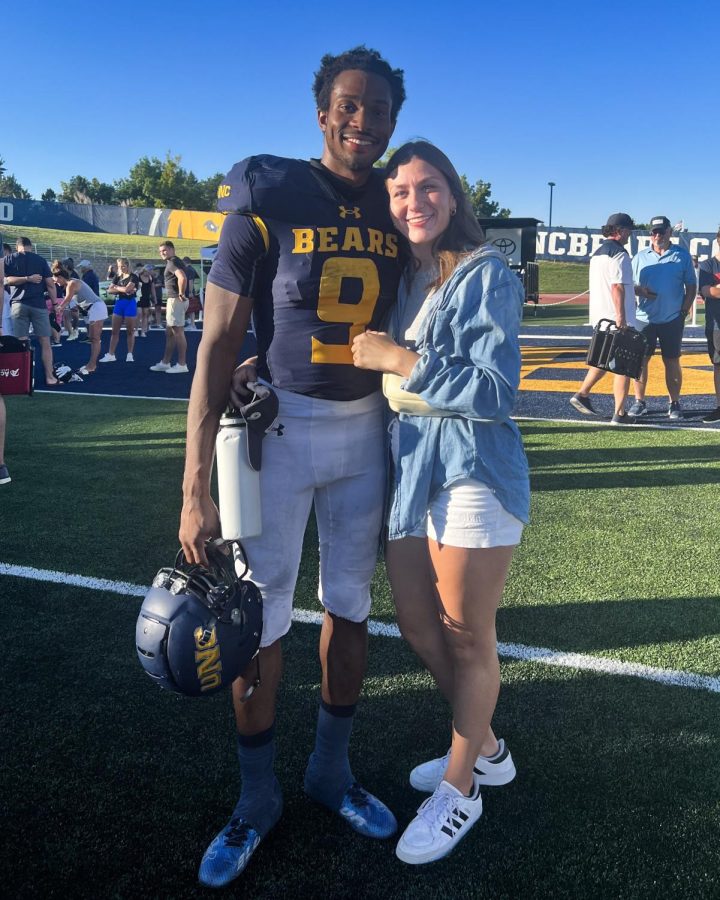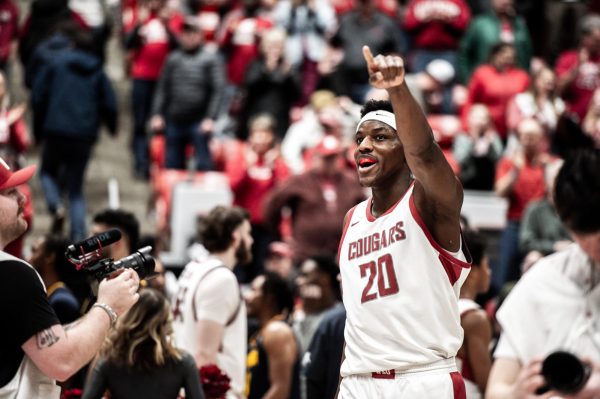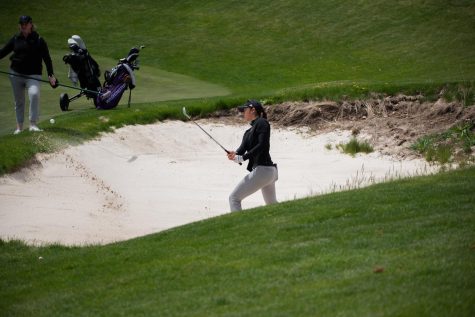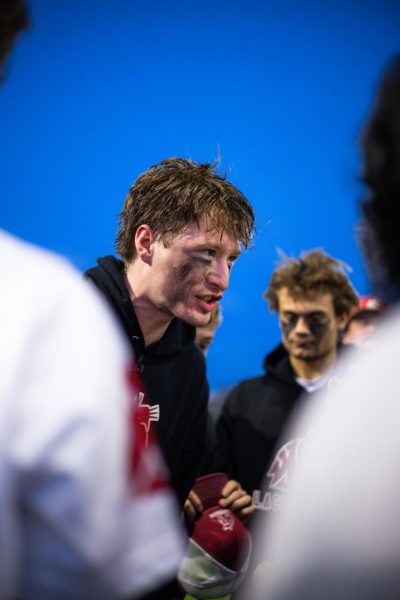Former WSU football player drops lawsuit against WSU
Woods alleged Rolovich cut him because of Players United affiliation
Kassidy Woods (left) and his partner Kyli Obermiller (right) at a University of Northern Colorado game.
April 20, 2023
When Kassidy Woods told former WSU football head coach Nick Rolovich he was a part of Players United in August 2020, he was prepared for backlash.
“Back then, I kinda was preparing for the worst just because of the conversation that my parents had with me and just the whole dynamic of just being in this country as a Black man. When you stand up for something that comes with a risk,” Woods said.
Players United is a student-athlete advocacy organization that expressed grievances in the way the NCAA treated Black athletes and how the NCAA handled athletic events during the pandemic, according to the Player’s Tribune.
But Woods said he was shocked when Rolovich told him he was cut from the team due to his involvement in the Players United. At the same time, being cut reassured him that he was truly standing up for what he believed in.
A year after he left the team, Woods filed a lawsuit against WSU and Rolovich on Aug. 21, 2021. On Dec. 16, 2022, Woods said he wrote to his attorneys to drop the lawsuit but still feels the university is not portraying his departure accurately.
WSU Athletic Director Pat Chun wrote in a text to ESPN that Woods was cut from the team due to health concerns surrounding COVID-19.
However, Woods’ version of the story was corroborated by a recorded phone call between Rolovich and Woods.
“It’s just wild to me how they are still trying to portray a story or a narrative that’s not true anymore, but years have passed,” he said.
Bill Stevens, senior associate director of athletics at WSU, declined to be interviewed about Woods dropping the lawsuit against WSU and Rolovich.
“We will not have a comment for your story,” Stevens wrote in an email.
While athletes today continue to advocate for their rights, over 60 years ago the term student-athlete was codified around a dead body to deny athletes worker’s rights.
Katie Lever, who just finished her doctoral dissertation on paternalism in college sports policy at University of Texas at Austin, said the term student-athlete was coined as a “strategetic euphemism” against college athletes.
In the early 1950s, the term student-athlete was created by then NCAA Executive Director Walter Byers to argue that athletes are students and not employees of the university so that schools could avoid liability to athletes who suffered injury and death on the playing field, Lever said.
The term student-athlete was first put to the test when collegiate football player Ray Dennison died because of a football injury in 1955. When his widow tried to request death gratuity, she was denied because her husband was considered a student-athlete and not an employee, Lever said.
Besides a lack of employee rights, student-athletes’ scholarships are still not protected. Scholarships are not a multi-year guarantee, but rather renewable on a year-by-year basis. While there are technically policies in place on how coaches can revoke scholarships, in reality, athletes’ scholarships are easily revoked for illness, injury or extenuating circumstances, she said.
Lever said that universities control athletes through player policy manuals, which require athletes to follow a certain code of conduct. What conduct is considered “disruptive” is very subjective and the rules often infringe on athletes’ privacy.
Athletes are still at risk for abusive coaching because the guidelines in the NCAA DI manual do not outline specific consequences for abuse, she said.
While there are guidelines protecting student-athletes against exploitation, the language suggests that schools should promote athlete well-being rather than have a required course of action for inappropriate coaching.
While athletes can be paid due to the NIL, “all the money in the world” is not going to resolve the trauma of an abusive coach or chronic injury.
“The NCAA, even in its press releases around name image and likeness emphasizes that student-athletes are not employees,” she said. ”With its historic context and the way that the NCAA has sort of manipulated the ideology behind that term, that’s where I think the harm comes from.”
Players United was created in part to stand up against these injustices, especially for student-athletes of color.
“Let’s be clear. My decision to transfer has NOTHING to do with my health concerns, but due to how I was treated for standing up for racial injustice.” Woods wrote on Twitter in September 2020.
Woods said he transferred to Northern Colorado in the spring semester of 2021 and played football there. He graduated with a degree in psychology in May 2022.
Woods is expecting a daughter, who will be named Serenity Woods, with his partner Kyli Obermiller. With a child on the way, he did not want any unnecessary stress hindering his focus and he dropped the lawsuit to inspire others to be more loving in the face of hate, he said.
“I just feel like, with me continuing to read God’s word and things like that, more specifically about speaking on lawsuits as well. It’s just like, I would rather have somebody wrong me than continue to go down this rabbit hole with this case,” he said.
Woods said the case was setback on both sides, both by the defendant and by himself changing attorneys.
One day, Woods wants to have a conversation with Chun and Rolovich to discuss what changes can be made in the Pac-12 and NCAA.
Since being cut from the team, Woods said he had not heard anything directly from Chun or Rolovich.
In a letter to WSU and Rolovich that Woods sent when dropping the lawsuit, Woods wrote that he forgave them for mistreating him and asked for forgiveness for any harm he had caused.
The future of player advocacy in the NCAA is player associations for each respective sport, Woods said. While name, image and likeness rules are a step in the right direction, they do not educate athletes about taking advantage of image opportunities in the right way.
“Whatever else players want,” he said. “We just need to be united and still continue to have that voice. So I just see athletes speaking up for themselves, speaking up for their teams, speaking up for their community and coaches being able to facilitate that.”























Anon Ymous • Apr 27, 2023 at 8:16 am
It is worth noting that while athletic scholarships are not guaranteed at many universities, all Pac-12 institutions including WSU guarantee every athletic scholarship for 4 years regardless of the student’s status on the team.